Why Are People Buried Above Ground in New Orleans?
The geography of New Orleans is a driving factor in why above-ground tombs exist in the iconic city. When the French originally settled in New Orleans in the early 18th century, the city was surrounded by bodies of water including the Mississippi River, Lake Borgne, and Lake Pontchartrain. Being surrounded by all these bodies of water lead the city to have a high-water table. The dangers of trying to bury someone in an area with a high-water table could lead to flooding of the graves or the coffin even being displaced.
The unique challenges posed by geography and multi-cultural influences over the centuries helped shape New Orleans into a unique melting pot. You can find touches of French, Spanish, African, Caribbean, and Creole culture from buildings to food to the way the dead are buried. So it’s not just the high-water table but cultural traditions that played a role in above ground burial. The unique above-ground tombs have been the backdrops of famous movies like Easy Rider and CSI: New Orleans. Famed author Anne Rice was allegedly inspired by the Lafayette #1 cemetery when conceiving Lestat’s tomb and writing the 1995 novel Memnoch the Devil. Also, because Voodoo has such a strong presence in New Orleans, in both history and legend, the cemeteries were often associated with Voodoo. The idea of writing XXX’s on tombs became connected with legends of Marie Laveau, famed 18th Voodoo priestess, and was perpetuated by New Orleans tour guides. Even now, cemeteries can still be targets for vandalism and there is expected etiquette to follow when visiting one.
But how did these iconic cemeteries come to exist in the first place?
The New World colony of New Orleans followed the traditions of the Old World for a long time. Originally, the burial practices of the Spanish and French influenced the burying of bodies, reflecting the shifting colonial influences at the time, but the Catholic church still retained strict control over burial practices. Originally, the elaborate graves we see today were not originally there. At the beginning of New Orleans as a colony, burying the dead was a problem. There are accounts during the early years that people were buried along with the natural levee system of the river. Struggles with the high-water table were an ongoing battle. According to Peter Dedek, author of The Cemeteries of New Orleans: A Cultural History, one of the first cemeteries of the city, St. Peter’s cemetery, had become overcrowded. Human burial grounds had also become crowded with parts from farm animals as well. With the growth of New Orleans continuing, the first planned cemetery was the St. Louis #1 cemetery (1789) and is the oldest cemetery in New Orleans.
The colony of New Orleans had French roots from 1718-1763, Spanish roots from 1763-1803, and was briefly reclaimed by the French and Napoleon before being sold to the United States with the Louisiana Purchase. It is possible during that time, especially when France briefly repossessed the colony, that Napoleon strongly encouraged neoclassical design in many aspects of architecture, including tombs. These influences, used in European cemeteries, eventually found their way to the New World, including in New Orleans. It wasn’t until the 19th century that we see above-grounds become more commonplace in New Orleans. In the 1820s, oven tombs (known as fours in French) and family tombs were the norms. Examples can be seen in the St. Louis #1 cemetery. These tombs were often built of brick, which traces their origin to Roman burials and Spanish design. While flooding continued, the new graves and tombs continued to be built above ground.
The New World colony followed the traditions of the Old World for a long time. Originally, the burial practices of the Spanish and French influenced the burying of bodies, reflecting the shifting colonial influences at the time, but the Catholic church still retained strict control over burial practices. Originally, the elaborate graves we see today were not originally there. At the beginning of New Orleans as a colony, burying the dead was a problem. There are accounts during the early years that people were buried along with the natural levee system of the river. Struggles with the high-water table were an ongoing battle. According to Peter Dedek, author of The Cemeteries of New Orleans: A Cultural History, one of the first cemeteries of the city, St. Peter’s cemetery, had become overcrowded. Human burial grounds had also become crowded with parts from farm animals as well. With the growth of New Orleans continuing, the first planned cemetery was the St. Louis #1 cemetery (1789) and is currently the oldest cemetery currently in New Orleans.The colony of New Orleans had French roots from 1718-1763, Spanish roots from 1763-1803, and was briefly reclaimed by the French and Napoleon before being sold to the United States with the Louisiana Purchase. It is possible during that time, especially when France briefly repossessed the colony, that Napoleon strongly encouraged neoclassical design in many aspects of architecture, including tombs. These influences, used in European cemeteries, eventually found their way to the New World, including in New Orleans. It wasn’t until the 19th century that we see large elaborate tombs become more commonplace in New Orleans. In the 1820s, oven tombs (known as fours in French) and family tombs were the norms. Examples can be seen in the St. Louis #1 cemetery. These tombs were often built of brick, which traces their origin to Roman burials and Spanish design. While flooding continued, the new graves and tombs continued to be built above ground.
It wasn’t until the mid-19th century that tombs began to grow more elaborate. Shifting attitudes about death helped fuel this change. Before the 1800s, death was something to be feared and causes were relatively unknown. New Orleans often suffered events like yellow fever outbreaks and natural disasters like hurricanes and death was something unavoidable. By the 1800s, attitudes evolved, and ancestors were honored. Cemeteries began to be planned out more purposefully and incorporated things like trees, plants, and statues. By the mid 19th century, cemeteries began to feature elaborate Individuals and families sought to memorialize the memories of deceased loved ones. In the 18th century, graves tended to be step tombs or box tombs. With the shift in views about death in the mid 19th century, tombs began to grow more elaborate. Wealthier families could have tombs decorated with things like elaborate sarcophagi, tombs, and vaults influenced by Greek and Roman, Gothic, Egyptian, Baroque, and Byzantine. Mausoleums also grew in popularity. Architects like J. N. B. de Pouilly became known for their elaborate tomb and cemetery designs during the 19th century. Cemeteries and graves became as individual as their owners.
However, not everyone was rich or could afford their own tombs. The idea of people joining these benefit and social societies to collectively pay for a tomb was almost like a life insurance policy. They would pay collectively for a gravesite, and once they died, they would be interred there. One example is the Firemen’s Charitable and Benevolent Organization, formed in 1834, that later helped found the Cypress Grove and later Greenwood cemeteries. The Cypress Grove cemetery was a charitable donation left by New Orleans philanthropist Stephen Henderson meant to be the final resting place for volunteer firemen and their families. Greenwood Cemetery was later founded to help overcrowding from Cypress Grove. There are tomb monuments for organizations like the Odd Fellows, the Masons, and the Protective Order of the Elk. Stunning examples of these can be found at Odds Fellows cemetery and in Greenwood cemetery where there is a tomb encased by a green mound with an elk statue on top, signifying its relation to the Protective Order of the Elk.
For above-ground tombs in New Orleans, when a burial is needed, the cemetery sexton opens the outer tablet marking the opening to the vault of the tomb. The vaults typically are walled-off behind the tablet with brick, which also must be removed. The remains of the corpse that was most recently interred in the tomb are then placed in a bag and moved to the bottom of the tomb. In the local lexicon, this space at the bottom of the tomb is referred to as a caveau or as a “receiving vault.” The act of moving the remains this way makes room for the remains of the corpse to be buried.
By local tradition, the tombs cannot be opened in this way for at least one year and one day. This is due to the belief being that this allows for the adequate decomposition of the previous corpse. Following the appropriate funerary ritual, the cemetery sexton again walls from the vault opening with brick and replaces the tablet. Generally, the names of the deceased and their birth dates and death dates are chiseled onto the tablet or elsewhere on the tomb. The above-ground tombs are generally not air-tight so that suitable gas exchange can occur for decomposition of the corpse. The tradition of waiting one year and one day between openings of the tomb was not always sufficient for adequate decomposition, even under the harsh conditions of the climate of New Orleans. These burial practices continue even today.
Every cemetery is open in New Orleans, except St Louis #1 and Lafayette #1. Find out more about what cemeteries to visit in our article: What cemeteries are open in 2021-2022
Sources:
“Cemeteries of New Orleans: Cemeteries: Greenwood Cemetery.” Save Our Cemeteries, Save Our Cemeteries, 2021, https://www.saveourcemeteries.org/cemeteries/cemeteries/greenwood-cemetery.html.
Dedek, Peter. The Cemeteries of New Orleans: A Cultural History. Baton Rouge: Louisiana State Press, 2017.
“Greenwood Nola.” Greenwood NOLA, Fireman’s Charitable & Benevolent Association, 2021, https://www.greenwoodnola.com/. Accessed 3 Dec. 2021.
“Historic Cemeteries of New Orleans.” Wikipedia, Wikimedia Foundation, 4 Mar. 2021, https://en.wikipedia.org/wiki/Historic_Cemeteries_of_New_Orleans. Accessed 2 Dec. 2021.


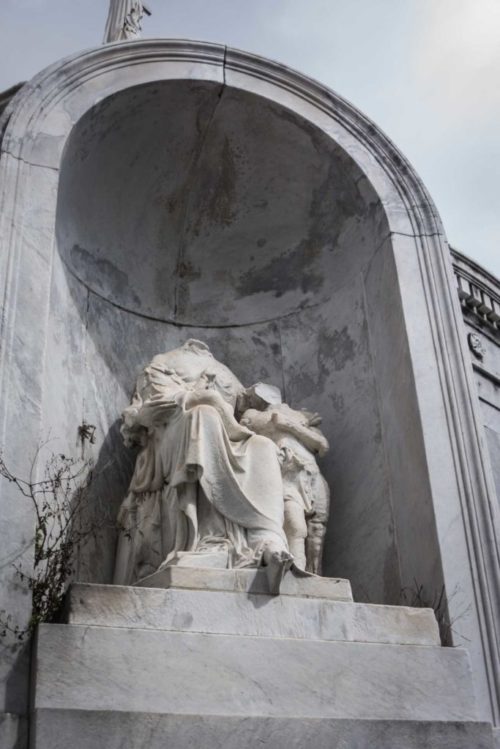

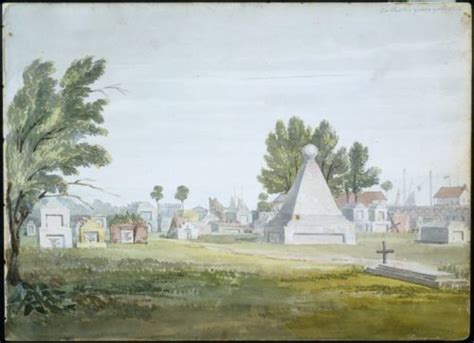


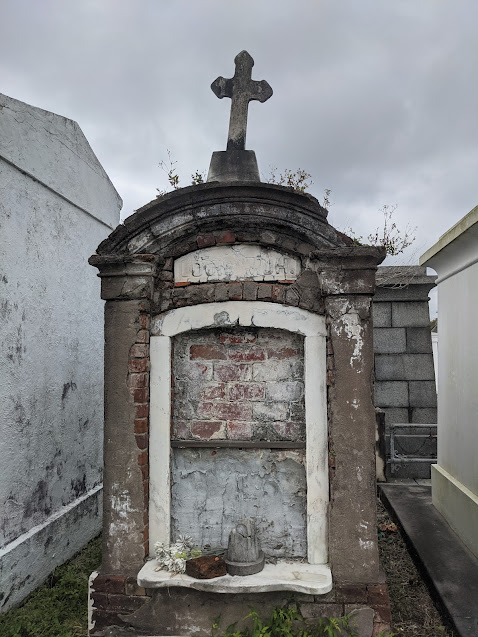
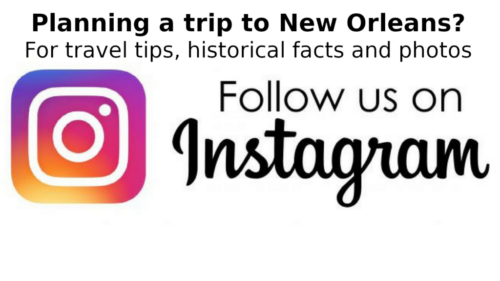
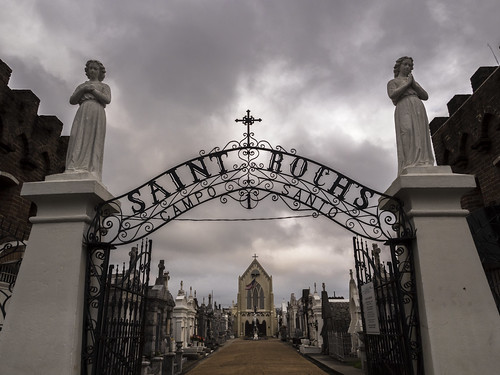







1 Comment